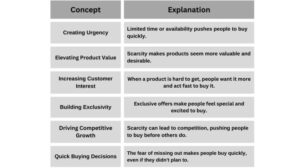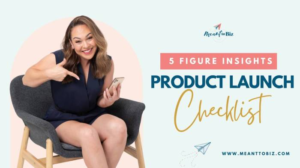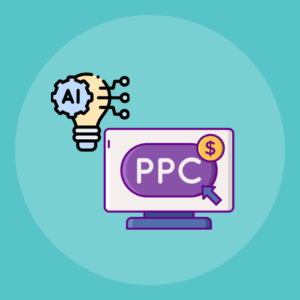
Welcome to the world of Social media launch strategy, where crafting the perfect online presence can make or break your product’s debut. Navigating the intricate landscape of social media requires a well-thought-out approach that not only captures attention but also fosters genuine engagement with your audience. By understanding the dynamics of audience analysis, content planning, and influencer relationships, you’re setting the stage for a successful launch.
In this comprehensive guide, we will delve into the essential components that underpin an effective social media launch, exploring everything from building link popularity to utilizing podcasts and PPC advertising. Each section is designed to equip you with the tools necessary to create a buzz around your brand and connect meaningfully with your target market.
Social Media Strategy Overview
A successful social media launch strategy is essential for organizations seeking to enhance their online presence and engage effectively with their audience. It involves a comprehensive framework that integrates various components necessary for a fruitful launch. Understanding these elements provides a roadmap that guides businesses through the complexities of social media engagement, ensuring they meet their goals while resonating with their target audience.The foundation of any social media strategy is audience analysis.
This process involves identifying and understanding the demographics, preferences, and behaviors of the target audience. By gaining insights into the audience, businesses can tailor their messaging, choose appropriate platforms, and engage in ways that foster a stronger connection. The significance of audience analysis cannot be overstated, as it directly impacts the effectiveness of the entire strategy.
Importance of Audience Analysis
Audience analysis serves as the cornerstone of a successful social media strategy. It allows businesses to focus their efforts on the right audience segments, maximizing engagement and conversions. Here are some key aspects of audience analysis:
- Demographic Insights: Understanding age, gender, location, and income levels helps in creating targeted content.
- Psychographic Data: Knowledge of interests, values, and lifestyles informs content creation, ensuring it resonates with the audience.
- Behavioral Patterns: Analyzing how the audience interacts with content on social media provides valuable insights into preferred platforms and content types.
Role of Content Planning and Scheduling
Content planning and scheduling are vital for maintaining a consistent and engaging social media presence. A well-structured content plan Artikels what, when, and where to post, ensuring that messaging remains aligned with the brand’s objectives. This organized approach enhances the effectiveness of communication by enabling timely and relevant engagement with the audience.Effective content planning includes several critical elements:
- Content Calendar: Developing a content calendar helps in organizing posts, campaigns, and promotional activities, ensuring a balanced mix of content types.
- Content Variety: A diverse content strategy that includes videos, images, articles, and polls keeps the audience engaged and encourages interaction.
- Platform-Specific Strategies: Understanding the nuances of each social media platform allows for tailored content that fits the audience’s expectations and behaviors.
The success of a social media launch is significantly enhanced by thorough audience analysis and strategic content planning.
Link Popularity and Its Impact on Social Media Launches
Link popularity plays a critical role in the visibility and success of social media launches. It refers to how many other websites link to a specific page, effectively influencing its ranking on search engines and its overall reach on social platforms. By enhancing link popularity, brands can increase their online presence, attract a larger audience, and drive more engagement during their product launch campaigns.Increasing link popularity can be achieved through various methods that leverage social media channels.
One of the primary ways to enhance link popularity is by creating valuable content that encourages others to link back to it. This can include informative blog posts, engaging videos, or captivating infographics that resonate with the audience. Furthermore, the use of social sharing buttons on websites makes it easier for users to share content across their networks, thereby increasing the chances of acquiring backlinks.
Methods for Increasing Link Popularity Through Social Media
Utilizing social media effectively can significantly boost link popularity. The following strategies can help brands enhance their online visibility through social channels:
- Shareable Content Creation: Developing high-quality, engaging, and informative content is essential. Content that evokes emotions or provides valuable insights is more likely to be shared, leading to increased backlinks.
- Utilizing Hashtags: Implementing relevant hashtags can broaden content reach, making it easier for users to discover and share it.
- Engaging with Followers: Actively responding to comments and engaging with the community can encourage users to share content with their networks, increasing link popularity.
- Cross-Promotion: Collaborating with other brands or content creators to share each other’s content can help tap into new audiences and acquire valuable backlinks.
Establishing relationships with influencers is another effective strategy for boosting link popularity. Influencers possess large followings and can significantly amplify your brand’s reach through their endorsements and shared content. Here are some strategies to leverage these relationships:
Strategies for Leveraging Relationships with Influencers
Building strategic partnerships with influencers can lead to increased link popularity and visibility. The following approaches are beneficial:
- Influencer Outreach: Reach out to influencers whose audience aligns with your target market. Offer them free products or services in exchange for reviews or mentions that include links back to your website.
- Co-Creation of Content: Collaborate with influencers to create content that showcases both parties. This could include blog posts, videos, or webinars that feature links back to your site.
- Social Media Takeovers: Allow influencers to take over your social media accounts for a day. This can introduce their followers to your brand and encourage them to link back to your content.
- Event Collaborations: Host events or webinars with influencers and promote them on social media. These events can generate buzz and lead to organic backlinks from attendees and partners.
By strategically enhancing link popularity through social media, brands can significantly elevate their visibility and engagement during launches, resulting in successful campaigns and increased market presence.
Building a List for Social Media Engagement

In today’s digital landscape, building an effective list for social media engagement is crucial for successful launches. This process is not only about gathering contact information but also about creating meaningful connections with your audience. A well-structured list can enhance your outreach efforts, leading to higher conversion rates and improved customer loyalty.One of the key aspects of successful list building is utilizing various techniques that encourage potential customers to share their information willingly.
These techniques serve as foundational tools for creating a robust list that can drive engagement during your social media launch.
Techniques for Effective List Building Prior to a Launch
To effectively build your list before a launch, consider implementing the following techniques:
- Landing Pages: Create dedicated landing pages that highlight the benefits of signing up for your email list. Ensure these pages are visually appealing and provide clear incentives.
- Contests and Giveaways: Run engaging contests that require participants to enter their email addresses. This not only boosts your list but also increases brand awareness.
- Social Media Promotions: Utilize your social media platforms to promote sign-ups. Post enticing content that encourages your followers to join your email list.
- Referral Programs: Encourage your existing list members to refer friends in exchange for rewards. This can significantly increase your reach.
The techniques mentioned above are proven strategies that effectively attract subscribers to your list, setting the stage for enhanced social media engagement.
Utilizing Lead Magnets to Grow Your Email List
Lead magnets play a critical role in list building. These are valuable resources offered in exchange for contact information, designed to attract potential customers. Here are some effective lead magnet ideas:
- eBooks: Offer comprehensive guides that address common pain points within your target audience.
- Webinars: Host informative webinars that provide insights and actionable advice, enticing participants to subscribe for future updates.
- Exclusive Discounts: Provide special discounts or offers for email subscribers to incentivize sign-ups.
- Free Trials: Allow users to experience your product or service with a free trial that requires an email address to access.
Implementing lead magnets helps create a compelling reason for your audience to join your email list, thereby fostering deeper engagement.
Importance of Segmenting Your List for Targeted Social Media Engagement
Segmenting your email list is essential for tailoring your communications based on specific audience characteristics. This targeted approach can significantly improve engagement and conversion rates. Consider the following segmentation strategies:
- Demographics: Group subscribers based on age, gender, location, or other demographic details to personalize content.
- Behavioral Segmentation: Segment based on user behavior, such as past purchases or engagement levels, to send relevant offers.
- Interests: Categorize subscribers according to their interests or preferences indicated during sign-ups to provide tailored content.
- Engagement Level: Differentiate between highly engaged subscribers and those who may need more nurturing to re-engage them effectively.
Segmenting your list empowers you to deliver content that resonates with different audience segments, ultimately enhancing your social media engagement efforts.
Effective list building combined with strategic segmentation is key to maximizing social media engagement during launches.
Incorporating Paid Surveys and Feedback
Gathering insights through paid surveys and feedback mechanisms is essential for refining your social media launch strategy. These methods provide valuable data that can help tailor your approach, enhance audience engagement, and ensure that your content resonates with your target demographic. By implementing these tools effectively, businesses can identify strengths and weaknesses before and after launching their social media campaigns.Creating a structured framework for conducting paid surveys involves several key steps.
Initially, it’s vital to define the objectives of the survey. This includes identifying specific aspects of your social media launch that need feedback, such as content preferences, platform effectiveness, or brand perception. Once objectives are set, selecting the right audience is crucial. This can be achieved by utilizing audience segmentation techniques or targeting specific demographics that align with your brand’s goals.
The next step is to design the survey questions to encourage detailed responses, ensuring a mix of qualitative and quantitative data. Incentivizing participation through financial rewards or exclusive offers can boost response rates and provide more comprehensive insights.
Implementing Feedback Mechanisms Post-Launch
Feedback mechanisms are critical for continuous improvement after a social media launch. They allow brands to assess audience reactions and engagement levels, which can directly influence future campaigns. A variety of tools can be utilized for gathering post-launch feedback.
Utilizing Social Media Analytics
Platforms such as Facebook, Instagram, and Twitter provide built-in analytics to monitor engagement metrics, reach, and audience demographics. This data helps in understanding what content performs well and what needs adjustment.
Creating Polls and Interactive Content
Engaging your audience through polls or interactive content on social media platforms encourages real-time feedback. This not only allows for immediate insights but also fosters a sense of community.
Conducting Follow-Up Surveys
After the launch, sending out follow-up surveys can yield insights on user experience and satisfaction. This can be done through email lists or social media messages, ensuring that the audience feels heard and valued.
Monitoring Comments and Direct Messages
Actively engaging with comments and direct messages offers another channel for feedback. This informal interaction can often reveal valuable insights that structured surveys might miss.
“Feedback is not just a tool for improvement; it’s a way to build a stronger relationship with your audience.”
Surveys play a pivotal role in shaping your future social media strategies. Data collected from these instruments can highlight trends and preferences that inform content creation, targeting strategies, and overall brand positioning. For instance, if surveys reveal a preference for video content over static posts, brands can pivot their strategies to focus more on video production. Analyzing survey results not only guides immediate adjustments but also helps in forecasting future needs and shifts in audience behavior.Incorporating paid surveys and feedback mechanisms can fundamentally enhance your social media launch strategy, ensuring that your brand remains responsive to the needs and desires of your audience, ultimately leading to better engagement and increased loyalty.
Podcasting as a Launch Tool
Creating a podcast series can be a game-changer for your social media launch strategy. It’s an opportunity to engage with your audience in a more personal and interactive way, providing valuable content that complements your overall messaging. Podcasts have gained immense popularity, making them a powerful medium to build your brand and connect with potential users or customers during a launch.To create a podcast series that aligns with your social media launch strategy, it’s crucial to define your target audience and the themes you want to explore.
It’s essential to ensure that your podcast episodes are relevant to your social media content and overall brand messaging. Consistency in tone and style will help reinforce your brand identity.
Collaboration with Guests to Reach Wider Audiences
Collaborating with guests can significantly enhance your podcast’s reach and impact during a launch. By inviting industry experts, influencers, or even satisfied customers to your show, you not only provide diverse perspectives but also tap into their audience base. Here’s a structured approach to effective collaboration:
1. Identify Potential Guests
Look for individuals who resonate with your brand values and have a following that matches your target audience.
2. Establish Clear Value
Communicate what your guests will gain by joining your podcast, whether it’s exposure, networking opportunities, or sharing their insights.
3. Schedule and Prepare
Set a schedule that accommodates your guests and prepare discussion points that will engage both your audience and the guest.
4. Promote the Episode Together
Cross-promoting the episode on both your social media channels and your guests’ platforms can lead to increased listenership and engagement.Incorporating these elements can not only enrich your podcast content but also extend your reach significantly.
Effective Promotion of Your Podcast Across Social Media Platforms
Promoting your podcast effectively across various social media platforms is essential for maximizing its reach. Here are some strategies to consider:
Create Eye-Catching Visuals
Use striking graphics or audiograms that highlight key moments from your podcast. This not only attracts attention but also encourages sharing.
Leverage Stories and Reels
Use Instagram Stories or Reels to share behind-the-scenes content, teaser clips, or quotes from your podcast episodes. This format encourages engagement and can drive traffic to your full episodes.
Engage with Your Audience
Encourage listeners to share their thoughts on episodes through comments or social media posts. Responding to feedback helps build community and maintain interest.
Utilize Hashtags and s
Research and use relevant hashtags to increase discoverability. This applies to all platforms, particularly Instagram and Twitter.
Establish a Regular Posting Schedule
Consistency is key. Share promotional content on a regular schedule to keep your audience informed and engaged leading up to and following each episode.By implementing these strategies, you can amplify your podcast’s visibility and encourage more listeners to engage with your launch efforts.
PPC Advertising Techniques

Pay-per-click (PPC) advertising is a powerful tool for driving traffic and engagement during social media launches. With various options available, brands can tailor their strategies to effectively reach their target audience while managing costs. This approach not only boosts visibility but can also lead to higher conversion rates when executed properly.Different PPC advertising options can be leveraged to enhance social media launch campaigns.
Each platform offers unique features that can be utilized to maximize impact. Here are the main types of PPC options available:
Types of PPC Advertising Options
Understanding the various PPC advertising options is essential to formulating a successful strategy for your social media launch. Below are popular PPC options with their key characteristics:
- Facebook Ads: These ads allow for detailed targeting based on demographics, interests, and behaviors. They can appear in news feeds, stories, or as sponsored posts, making them versatile for visual storytelling.
- Instagram Ads: As a visual platform, Instagram ads are great for captivating users. Formats include photo ads, video ads, carousel ads, and story ads, ideal for engaging a younger audience.
- Twitter Ads: Twitter offers promoted tweets and trends, which help in boosting engagement during high-traffic events. They can increase visibility but require continuous monitoring to gauge effectiveness.
- LinkedIn Ads: Targeted towards professionals, LinkedIn ads are suitable for B2B launches. Sponsored content and InMail can directly reach decision-makers.
Setting a PPC budget is crucial to ensuring effective spending. The following steps Artikel a plan for establishing and measuring your PPC budget’s success:
Setting PPC Budgets and Measuring Success
Creating a well-defined PPC budget is integral to control costs and maximize returns. Consider these critical elements when setting your budget:
- Define Your Goals: Determine specific objectives like brand awareness, lead generation, or sales conversions to guide budget allocation.
- Daily and Lifetime Budgets: Set both daily and lifetime budgets to control spending effectively throughout the campaign duration.
- Monitor Metrics: Regularly track key performance indicators (KPIs) such as click-through rates (CTR), conversion rates, and return on ad spend (ROAS) to assess campaign performance.
- A/B Testing Alignment: Ensure that your budget strategy aligns with A/B testing approaches to refine your campaigns based on real-time data.
To optimize PPC ads, A/B testing is vital. This method allows marketers to experiment with different ad variations to determine what resonates best with the audience.
A/B Testing Methods for Optimizing PPC Ads
Implementing A/B testing can significantly enhance the effectiveness of your PPC campaigns. The following techniques Artikel how to conduct A/B tests effectively:
- Create Variations: Develop different versions of your ad by changing elements such as headlines, images, call-to-action (CTA) buttons, and ad copy.
- Run Simultaneously: Ensure that both variations run at the same time to eliminate external factors affecting performance. This approach allows for a more accurate comparison.
- Analyze Performance: Monitor engagement metrics during the testing phase, focusing on CTR and conversion rates to identify the best-performing ad version.
- Iterate and Refine: Use insights gained from A/B testing to make data-driven adjustments to your campaigns, continually optimizing ad performance throughout the launch.
By effectively utilizing PPC advertising techniques during a social media launch, businesses can enhance visibility, drive engagement, and achieve their marketing goals efficiently.
PPC Publishing Strategies
Selecting the right platforms for pay-per-click (PPC) advertising is crucial for an effective social media launch. The right choices can maximize visibility and engagement while ensuring that marketing budgets are spent efficiently. A well-executed PPC strategy not only drives traffic but also generates valuable insights into audience behavior.
Steps for Selecting the Right Platforms
Choosing the appropriate platforms for PPC publishing requires careful consideration of your target audience and campaign objectives. Here are key steps to guide the selection process:
- Identify Your Audience: Understand the demographics, interests, and online habits of your target audience. Platforms like Facebook and Instagram cater to different user bases compared to LinkedIn or Twitter.
- Evaluate Platform Features: Each platform offers unique targeting capabilities and ad formats. Assess these features to determine which align best with your campaign goals.
- Analyze Competitor Activity: Research where competitors invest in PPC. Tools like SEMrush and SpyFu can provide insights into their strategies and the platforms they utilize.
- Set Budget Constraints: Different platforms come with varied cost structures. Ensure your budget aligns with your choice to avoid overspending.
- Test and Iterate: Consider running test campaigns on multiple platforms. This allows you to gauge performance and adjust your strategy based on real-time data.
Creating Compelling Ad Content
Developing impactful ad content is essential for capturing your audience’s attention. Effective ads should resonate emotionally and practically, prompting users to act. Here are crucial elements to consider:
- Clear Value Proposition: Clearly communicate what makes your product or service unique. A strong value proposition helps differentiate your offering from competitors.
- Engaging Visuals: Use high-quality images or videos that relate directly to your message. Visual content often garners more engagement than text alone.
- Targeted Messaging: Tailor your ad copy to address the specific needs and pain points of your audience. Personalized messaging can significantly boost conversion rates.
- Strong Call to Action (CTA): Incorporate a compelling CTA that encourages immediate action. Phrases like “Sign Up Now” or “Shop Today” can create urgency.
- A/B Testing: Experiment with different versions of your ads to determine what resonates best with your audience. Test variations in headlines, visuals, and CTAs.
Tracking and Analyzing PPC Performance Metrics
Monitoring and analyzing PPC performance is essential for understanding the effectiveness of your campaigns. Key performance metrics provide insights that can refine future strategies. Here are vital metrics to track:
- Click-Through Rate (CTR): This metric measures the number of clicks your ad receives versus the number of impressions. A high CTR indicates that your ad content is compelling.
- Conversion Rate: Assess the percentage of users who complete the desired action after clicking your ad. This indicates how effective your landing page and offer are.
- Cost Per Click (CPC): Calculate the amount you pay for each click on your ad. Monitoring this can help manage your budget efficiently.
- Return on Ad Spend (ROAS): This metric evaluates the revenue generated for every dollar spent on PPC. A higher ROAS signifies a successful campaign.
- Quality Score: Platforms like Google Ads assign a quality score based on the relevance of your s, ads, and landing pages. A higher score can lower CPC and improve ad positioning.
Regularly reviewing these metrics allows for timely adjustments to optimize performance and enhance overall campaign effectiveness.
Strategies for Product Creation and Launching
Creating and launching a product effectively requires a well-structured approach that harmonizes with social media marketing efforts. Leveraging social media can significantly amplify a product’s visibility and consumer interest, ensuring a successful launch. This segment will break down the stages of product creation that align with social media marketing, provide a checklist for a smooth launch, and Artikel strategies for engaging audiences before the product release.
Stages of Product Creation Aligned with Social Media Marketing
The product creation process can be segmented into distinct stages that align seamlessly with social media marketing. These stages include ideation, development, testing, and launch. Each stage presents opportunities to engage with your audience and gather insights.
1. Ideation
This initial phase focuses on brainstorming ideas. Social media can be a valuable tool for gathering feedback and generating interest. Platforms like Twitter and Facebook can be utilized to conduct polls or discussions, allowing potential customers to share their preferences.
2. Development
Once an idea takes shape, move to the development stage. Share behind-the-scenes updates on social media to keep your audience engaged. This might include sneak peeks of product features or a look at the development process.
3. Testing
Testing is crucial for quality assurance. Consider involving your audience by offering trials or beta testing opportunities through social media. This not only builds trust but also creates excitement as potential customers feel included in the product’s journey.
4. Launch
The launch phase is where social media truly shines. Utilize various platforms to create a buzz around your product release. Countdown posts, teaser videos, and live Q&A sessions can generate anticipation and excitement leading up to the launch date.
Checklist for Planning a Smooth Product Launch through Social Media
Having a comprehensive checklist ensures that no critical steps are overlooked during the product launch process. Below is a structured checklist to guide you through planning:
Define Your Audience
Clearly identify your target market. Knowing your audience will help tailor your messaging on social media.
Create a Content Calendar
Plan your posts leading up to the launch, including teasers, countdowns, and launch announcements.
Develop Visuals
Create high-quality images and videos to showcase your product. Visual content is key to catching the audience’s attention.
Engage Influencers
Collaborate with influencers in your niche to widen your reach. Their endorsement can add credibility and attract followers to your brand.
Set Up Tracking Tools
Use analytics tools to monitor engagement and reach on social media platforms. This helps in adjusting strategies in real-time.
Prepare for Customer Interaction
Be ready to respond to inquiries and comments promptly. Engagement is crucial during the launch period.
Strategies for Engaging Audiences Pre-Launch
Building anticipation and excitement before a product launch is essential for a successful entry into the market. Below are strategies to effectively engage your audience during this period:
Early Access or Exclusive Previews
Offer a select group of customers early access or exclusive previews of the product. This creates a sense of exclusivity and urgency.
Interactive Contests or Giveaways
Conduct contests that encourage users to share your content or engage with your brand, often rewarding them with a chance to win the new product.
User-Generated Content Campaigns
Encourage your audience to share content related to the product theme, fostering a community atmosphere and authentic connections.
Regular Updates and Teasers
Share regular updates on progress and sneak peeks of the product. Short video clips or images can be very effective in maintaining interest.
Utilize Countdown Timers
Implement countdown timers in your posts leading up to the launch date. This creates a visual reminder and adds to the excitement.
Engage in Live Sessions
Host live sessions on platforms like Instagram or Facebook to discuss the product, share insights, and answer audience questions directly.
“A well-executed product launch strategy is pivotal in building momentum and ensuring a successful market entry.”
Ultimate Conclusion
In conclusion, executing a successful social media launch strategy involves a meticulous blend of preparation, creativity, and adaptability. By employing the insights and techniques discussed, you can elevate your product’s visibility and engagement levels, ensuring a memorable launch experience. Remember, the key to sustained success lies in continuous improvement and being attuned to your audience’s needs.
Questions and Answers
What is a social media launch strategy?
A social media launch strategy is a plan designed to promote a product or service on social media platforms, maximizing visibility and engagement through targeted content and audience interaction.
How important is audience analysis in a launch?
Audience analysis is crucial as it helps to understand the preferences and behaviors of your target market, allowing for tailored messaging that resonates and drives engagement.
What role does content planning play?
Content planning ensures that your messaging is consistent, timely, and relevant, which is essential for generating interest and excitement leading up to and during the launch.
How can influencers enhance my launch?
Influencers can amplify your reach by introducing your product to their audience, lending credibility, and driving engagement through authentic endorsements.
What is the benefit of using PPC advertising?
PPC advertising allows for targeted promotion that can quickly increase visibility and drive traffic to your launch, making it a powerful tool for immediate impact.





